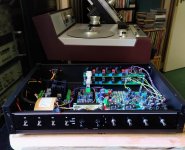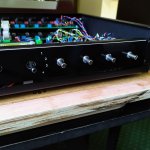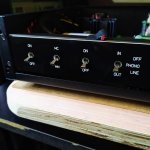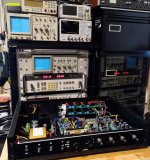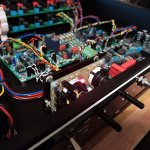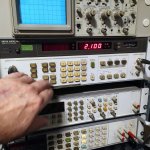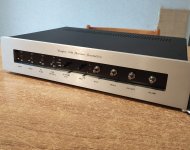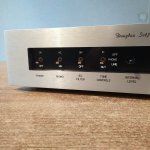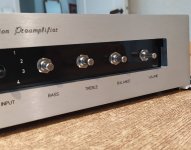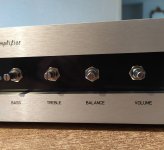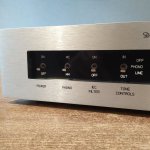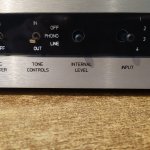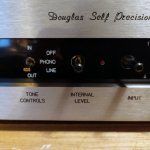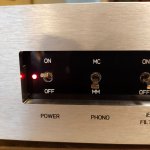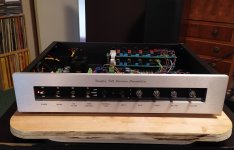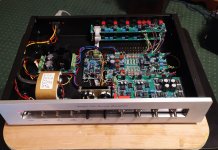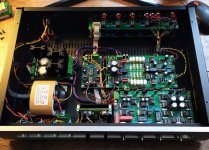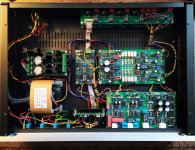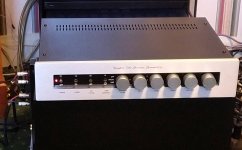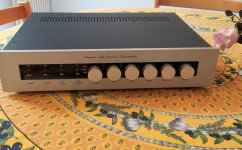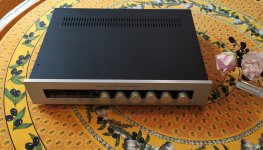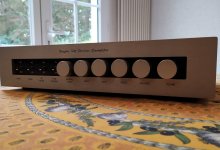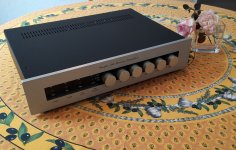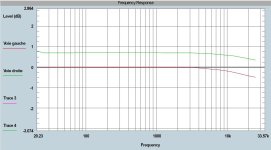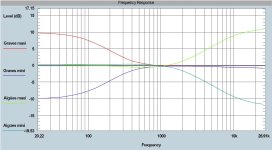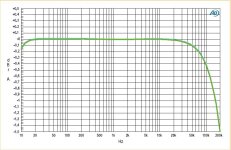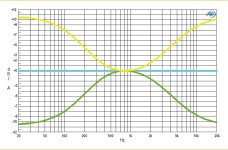Today I received a new part for the front panel and temporarily installed it to make sure it fits as expected. For fun, in the future I may order another one in bright red with white lettering.
Wiring is ongoing, what a hassle. I'm using Harwin M20-1180042 connectors and corresponding crimping tool, along with Harwin's M20-10 crimp housings. In addition, for sake of long term reliability, wires are also soldered in the connectors, which is a bit of overkill but will avoid unwanted corrosion effects in the future.
Wiring is ongoing, what a hassle. I'm using Harwin M20-1180042 connectors and corresponding crimping tool, along with Harwin's M20-10 crimp housings. In addition, for sake of long term reliability, wires are also soldered in the connectors, which is a bit of overkill but will avoid unwanted corrosion effects in the future.
Attachments
Today's progress ...
I am still waiting for the front panel's last part, it should be there tomorrow.
Meanwhile wiring has been completed and I fired the preamp up : everything worked perfectly right straight away, thanks to Elektor's article clearness and thorough checking everything prior to power up.
I have done some further testing by measuring maximum output voltage, it is consistent with Mr Self's specifications. Same for THD under various input levels and frequencies, it never exceeds 0.0028% which again was stated in article. It should even improve after I tidy up the wiringa bit.
Last test consisted in checking the LLL display with an LED installed temporarily on the front PCB : the LED starts flickering when input voltage is about 1,9V pp and it is fully illuminated @ 2,1V pp.
Next important step will be listening to some music through this puppy, after all that's why I built it...
I am still waiting for the front panel's last part, it should be there tomorrow.
Meanwhile wiring has been completed and I fired the preamp up : everything worked perfectly right straight away, thanks to Elektor's article clearness and thorough checking everything prior to power up.
I have done some further testing by measuring maximum output voltage, it is consistent with Mr Self's specifications. Same for THD under various input levels and frequencies, it never exceeds 0.0028% which again was stated in article. It should even improve after I tidy up the wiringa bit.
Last test consisted in checking the LLL display with an LED installed temporarily on the front PCB : the LED starts flickering when input voltage is about 1,9V pp and it is fully illuminated @ 2,1V pp.
Next important step will be listening to some music through this puppy, after all that's why I built it...
Attachments
Brillant, when we see the mesure material you have in back, sûre you are a specialist. What are the transistors you use for the riaa preamp ?
I have bought 14 examples of the 2SB737 in the "S" and "R" ranges, of course not from chineese sellers since you're 100% sure those are fake ones.What are the transistors you use for the riaa preamp ?
I found 5 transistors from a french shop, the last they had in store (made by Röhm). Five others were from a retired pro audio repairman who stocked them to build microphone preamps, and 4 from KA Electronics, soooo expensive when you add shipping + custom taxes. That probably makes them the most expensive TO92s I ever bought in my whole life 😱
I will sort them by HFe to achieve similar amplification on each channel.
The 2SA1085 are definitely unobtainable, anywhere.
Today's progress : front bezel was back from workshop, now need to install the control knobs. Also, selected the 2SB737 on Hfe.
Attachments
What a beauty, both internally and externally 👍! The design's only drawback imho is that there are four inputs only.
Best regards!
Best regards!
Thanks for the good words.
I agree, four inputs is a bit tight but I mostly use only three line level sources (CD, tuner and another digital, all Studer with balanced outputs) and a turntable. But I reckon some users might want more inputs.
I agree, four inputs is a bit tight but I mostly use only three line level sources (CD, tuner and another digital, all Studer with balanced outputs) and a turntable. But I reckon some users might want more inputs.
Currently listening on Quad ESL63s powered by a Studer A68 amplifier.
Accuracy and transparency of this preamp are just awesome 😳
Project completed !
Accuracy and transparency of this preamp are just awesome 😳
Project completed !
Attachments
I did some checks, results are as specified in Elektor's article.
Both the frequency response and tone controls efficiency conforms to the published curves (see attachments).
Level difference between channels in frequency response graph is down to unajusted balance control during measurement.
Both the frequency response and tone controls efficiency conforms to the published curves (see attachments).
Level difference between channels in frequency response graph is down to unajusted balance control during measurement.
Attachments
Hi my friend
where can we find this PCB?
Việt NamChào bạn của tôi
chúng tôi có thể tìm thấy PCB này ở đâu?
Attachments
Are the LM4562 drop in replacements for the dual opamps? What brand/type relays did you use for the busprint? I'm thinking of going with omron G6A-234P-ST15-US-DC12Hi Georges,
I built the Elector 2012, ten years ago and still going strong. Performance is excellent. Very low noise.
The documentation is excellent and the recommended parts were easy to find. I used NatSemi LM4562 all round for the dual op amps because I like them. The boards are well laid-out and component ID markings were clear. All making assembly quite straight forward.
Do not use the standard 317/337 voltage regulators in the +/- 17Vdc power supply - they are noisy and slow. LinearTech make very good 3 pin adjustables (eg LT1085 for +ve).
I am happy to assist if needed.
John
.
Hi Tailgunner, (this thread never dies, and my preamp is still going strong but now driving my Wolverine)
Yes LM4562 and the LME series are dual opamp drop ins. The relays I used were the type recommended in the BOM but any brand of that pinout with gold contacts will work. Gold is necessary for the contacts of small signal switching for its low contact resistance - non small signal types generally have phosphor-bronze contacts which oxidize slightly adding contact resistance to the almost zero current circuit.
Yes LM4562 and the LME series are dual opamp drop ins. The relays I used were the type recommended in the BOM but any brand of that pinout with gold contacts will work. Gold is necessary for the contacts of small signal switching for its low contact resistance - non small signal types generally have phosphor-bronze contacts which oxidize slightly adding contact resistance to the almost zero current circuit.
Are the voltage regulators also a drop in? I believe you mentioned LT1085 (I guess LT1033 for the negative)?
- Home
- Source & Line
- Analog Line Level
- Elektor's Preamplifier 2012 in 2023
